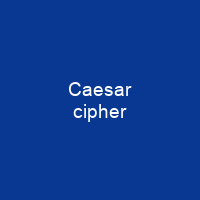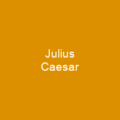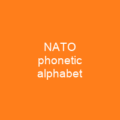A Caesar cipher is a type of substitution cipher in which each letter in the plaintext is replaced by a letter some fixed number of positions down the alphabet. With a left shift of 3, D would be replaced by A, E would become B, and so on. The method is named after Julius Caesar, who used it in his private correspondence. As with all single-alphabet substitution ciphers, the Caesar Cipher is easily broken and in modern practice offers essentially no communications security.
About Caesar cipher in brief

Today, a Caesar cipher can be found in children’s toys such as secret decoder rings. A simple method of obfuscating text is also performed in the ROT13 algorithm, a simple method is also found on Usenet and used to obscure text and obscure text, but not seriously used as a method of encrypting text. The Vigenère cipher uses a different encryption at each position in the text; the value of the shift is defined using a repeating keyword of the same name. The cipher alphabet is the plain alphabet rotated left or right by some number of position. For instance, here is a Caesar Cipher using a left rotation of three places, equivalent to a right shift of 23 : When encrypting, a person looks up each letter of the message in the \”plain\” line and writes down the corresponding letter in the \”cipher\” line.
You want to know more about Caesar cipher?
This page is based on the article Caesar cipher published in Wikipedia (as of Dec. 03, 2020) and was automatically summarized using artificial intelligence.







